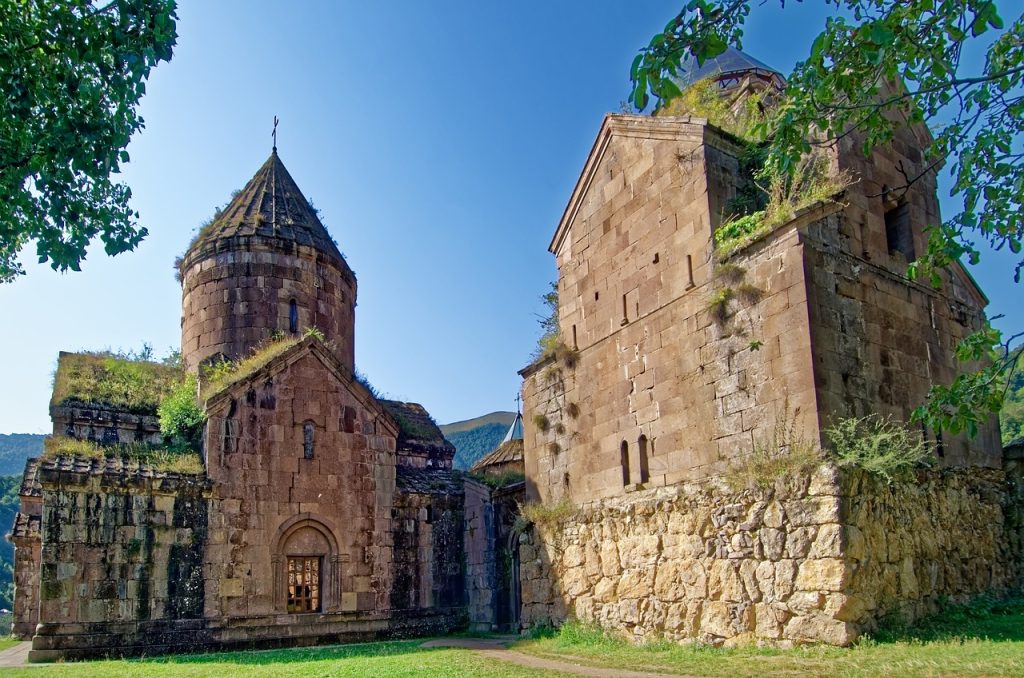Armenian architecture is one of the most distinctive and interesting in the world. A unique blend of influences from the East and the West, Armenian architecture is characterized by its use of rich and vibrant colors, intricate stone carvings, and ornate designs. Once you’re done playing on 22Bet Casino, take your time to learn about this unique architectural wonder.
Key Features of Ancient Armenian Architecture

The basis of Armenian architecture is stone. Armenian mountains are rich in a variety of minerals, allowing for a wide range of colors and hues to be used in construction. In the past, Armenian architects used a technique known as “Ashlar”, which involved shaping stone into large rectangular blocks that were then fitted together tightly without the use of mortar. This resulted in a strong and durable construction that was resistant to both natural and man-made disasters.
Armenian buildings were designed to take advantage of the natural landscape. In the past, many homes were built into the sides of hills, with the front of the house facing the sun. This helped to keep the home warm in winter and cool in summer. Armenia’s many churches and monasteries are also built into mountainsides, taking advantage of the natural rock formations to create unique and striking buildings.
One of the most distinctive features of Armenian architecture is the use of tall, thin columns. These columns are often decorated with carvings of knots or interlocking shapes. They are used to support the weight of the roof without the use of thick, heavy walls. This gives Armenian buildings a light and airy feel, even when they are made of stone.
Armenian architects were also masters of creating beautiful arches. They used brick or stone to create graceful curves that could support the weight of the roof or act as an opening to let light and air into the building. Armenian churches are especially well-known for their stunning arches, which are often decorated with intricate carvings.
Another key feature of Armenian architecture is the use of stained glass. Churches and other public buildings are often adorned with colorful windows that let in light and create a beautiful atmosphere. In some cases, stained glass is used to tell a story or depict a scene from Armenian history or mythology.
Armenian architecture is characterized by its use of natural materials, its focus on the landscape, its tall and slender columns, its beautiful arches, and its stained glass windows. These features combine to create a unique and distinctive style that has been beloved by Armenians for centuries.
Examples of Ancient Armenian Architecture

Some of the most famous examples of Armenian architecture include the Temple of Garni, the Cathedral of Saint Gregory of Narek, and the Monastery of Geghard. These beautiful structures are testimony to the skill and artistry of Armenian architects and craftsmen.
The Temple of Garni is a good example of the classical influence on Armenian architecture. Built in the 1st century AD, the temple is a Greco-Roman style building with a colonnaded portico and a small shrine in the back. The cathedral of Saint Gregory of Narek, on the other hand, is a more traditional Armenian building, constructed in the 10th century. Built entirely of stone, the cathedral features intricate carvings and reliefs that tell the story of the life of Saint Gregory.
The Monastery of Geghard is another fine example of Armenian architecture. Constructed in the 13th century, the monastery is built into the side of a mountain and is accessible only by a narrow and winding stairway. The interior of the monastery is dark and mysterious, with hidden chambers and secret passageways.
These are just a few of the many examples of Armenian architecture. With its unique blend of influences, Armenian architecture is truly one of a kind.




